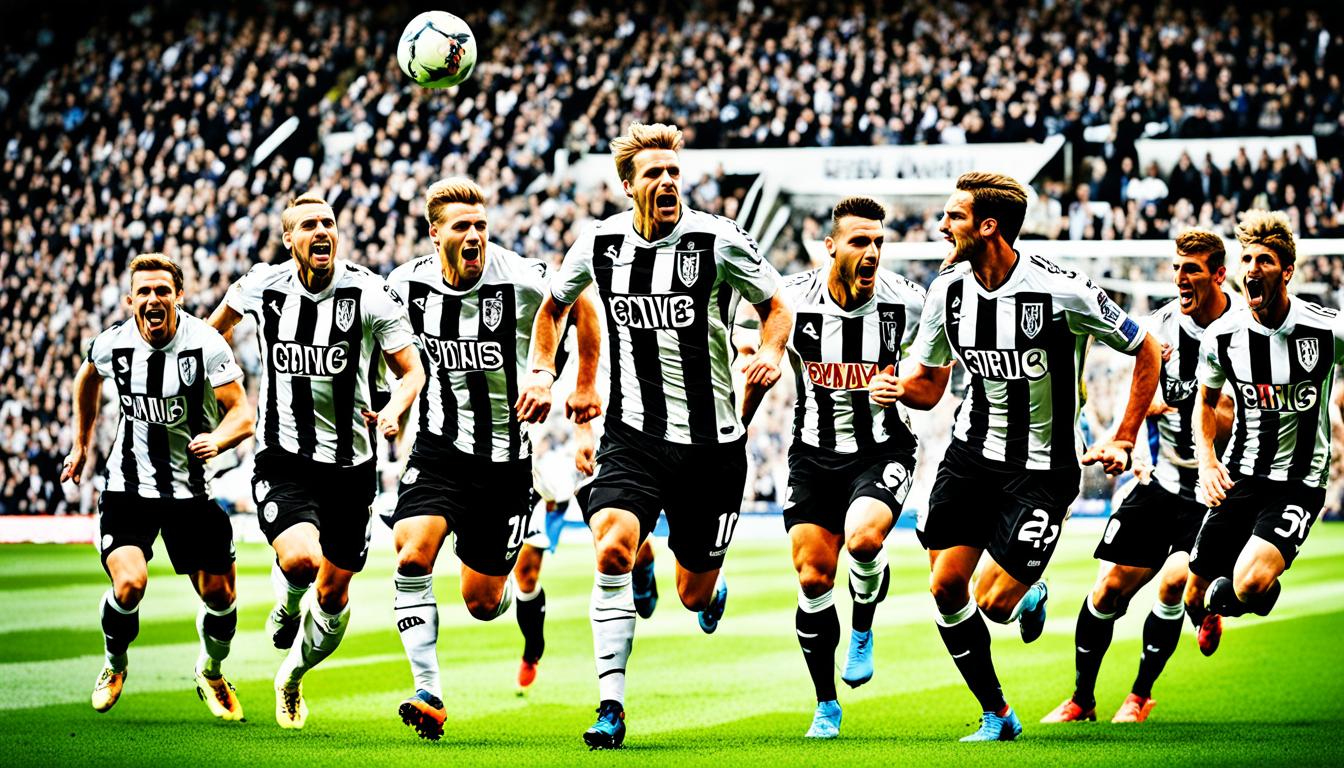
“Football is a game of mistakes. Whoever makes the fewest, wins.” – Johan Cruyff. These words resonate deeply within the world of derby county, where precision and strategy take center stage in the quest for success. As one of the most storied English football clubs, Derby County, commonly known as The Rams, has been a significant part of the football landscape since its founding in 1884.
Home to the Pride Park Stadium, which seats 32,956 fans, this championship soccer team has rich historical roots and a passionate following. Competing in the EFL Championship, Derby continues to navigate the dynamic and competitive environment of English football. Despite facing challenges and relegations, Derby County’s legacy remains intact, driven by a commitment to excellence and an unwavering fanbase.
Join us as we explore the captivating history, achievements, and future aspirations of this beloved English football club, cementing its status not only as a team but also as a significant part of Derby’s community and identity.
Key Takeaways
- Founded in 1884, Derby County is 140 years old.
- Pride Park Stadium has a seating capacity of 32,956.
- The Rams have won the FA Cup and the Football League Championship.
- They have faced significant challenges, including a points deduction leading to relegation.
- Derby County has a rich history, competing in every season of the English football league system, except for six.
- Their passionate fanbase remains a core part of their identity and support.
Introduction to Derby County
Derby County Football Club, founded in 1884, has deep ties to the community of Derby, England. Established as an offshoot of Derbyshire County Cricket Club, it aimed to offer a winter sporting option for fans and generate additional revenue for cricket. Over the years, Derby County has grown into a symbol of the local culture and an influential figure in the realm of English football.
The club has remained competitive in the English football landscape, participating in nearly every season of the English football league except for a brief interruption. Its hallmark achievements, including two English League Championships in the 1970s, showcased its prowess on the pitch. The Rams, as Derby County is affectionately known, enjoy a rich legacy marked by a passionate fan base, vibrant community involvement, and significant contributions to football in England.
Derby’s demographics reflect a diverse population of approximately 263,490 people, according to 2022 statistics. The ethnicity breakdown includes 73.8% White, 15.6% Asian, and varying percentages of other ethnicities. The religious landscape presents a unique mix, with 40.2% identifying as Christian and 36.6% stating no religion. These factors contribute to the fabric of support for Derby County, enriching the club’s identity and connection with its fans.
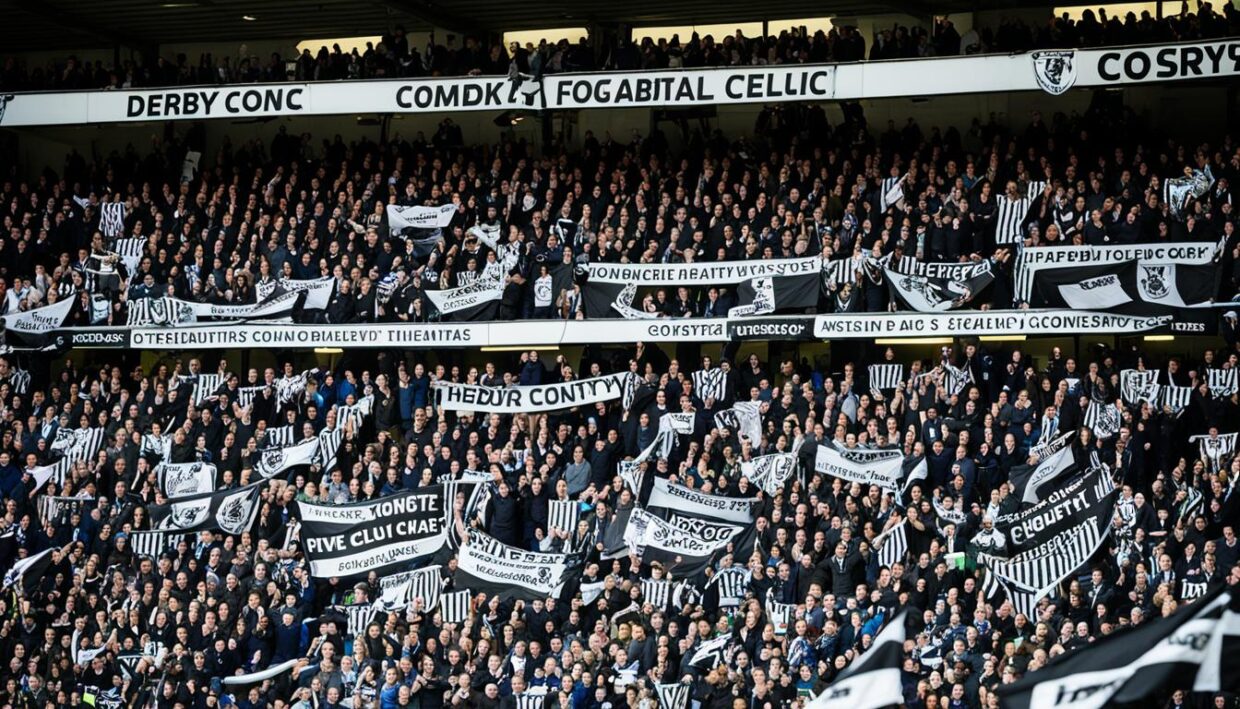
Playing their home games at Pride Park Stadium since 1997, Derby County continues to lead as a prominent English football club, fostering talent and rekindling the competitive spirit established in its early days. The club’s traditional colors of black and white evoke pride among supporters and symbolize the enduring spirit of the Rams.
The History of Derby County Football Club
The history of Derby County Football Club is notable and dynamic, starting from its establishment in 1884 by the Derbyshire County Cricket Club. The club quickly became a significant part of English football history, joining the ranks as one of the original members of the Football League in 1888. Early years witnessed a mix of accomplishments and challenges, with the club experiencing five promotions and five relegations from 1967 to the present day.
The 1970s marked a golden era for Derby County, as the team, under the guidance of Brian Clough, secured the Football League First Division title twice. Derby County achieved an impressive run, reaching the European Cup semi-finals in 1973. The pinnacle of this success came during the 1971-72 season when they won their first-ever League title and also claimed the Texaco Cup. Additionally, the reserves team won The Central League for the first time since 1936 that same season.
Throughout its journey, Derby County underwent several transformations, including a move to the Baseball Ground in 1895 and later relocating to Pride Park in 1997. Originally, the club’s colors were amber, chocolate, and pale blue, evolving over time into the iconic black and white scheme that fans cherish today. The distinctive club logo features a ram’s head, representing Derbyshire’s historical ties to the woollen industry and the cultural significance of the Derby Ram.

Derby County’s lineage not only reflects the club’s fortunes on the pitch but also symbolizes the evolution of football in England. The adoption of navy-blue shorts in 1969 by Brian Clough further cemented the unique identity of the team. The club continues to uphold its heritage while aiming for future triumphs, ensuring that the legacy of the history of Derby County remains strong in English football history.
Key Achievements of Derby County
Derby County Football Club has a storied legacy and has secured numerous notable accomplishments, marking its significant presence in English football. Founded in 1884, the club quickly established itself as a formidable force within the sport. The club has won the prestigious league titles, clinching the English top-flight title twice during the 1971-1972 and 1974-1975 seasons.
In addition to these league triumphs, Derby County achieved a remarkable feat in the 1970-1971 season by setting the record for the most consecutive home wins in English football, amassing an impressive total of 22 victories. During the 1983-1984 season, they dazzled fans by scoring 103 goals in a single campaign, reinforcing their reputation for offensive prowess.
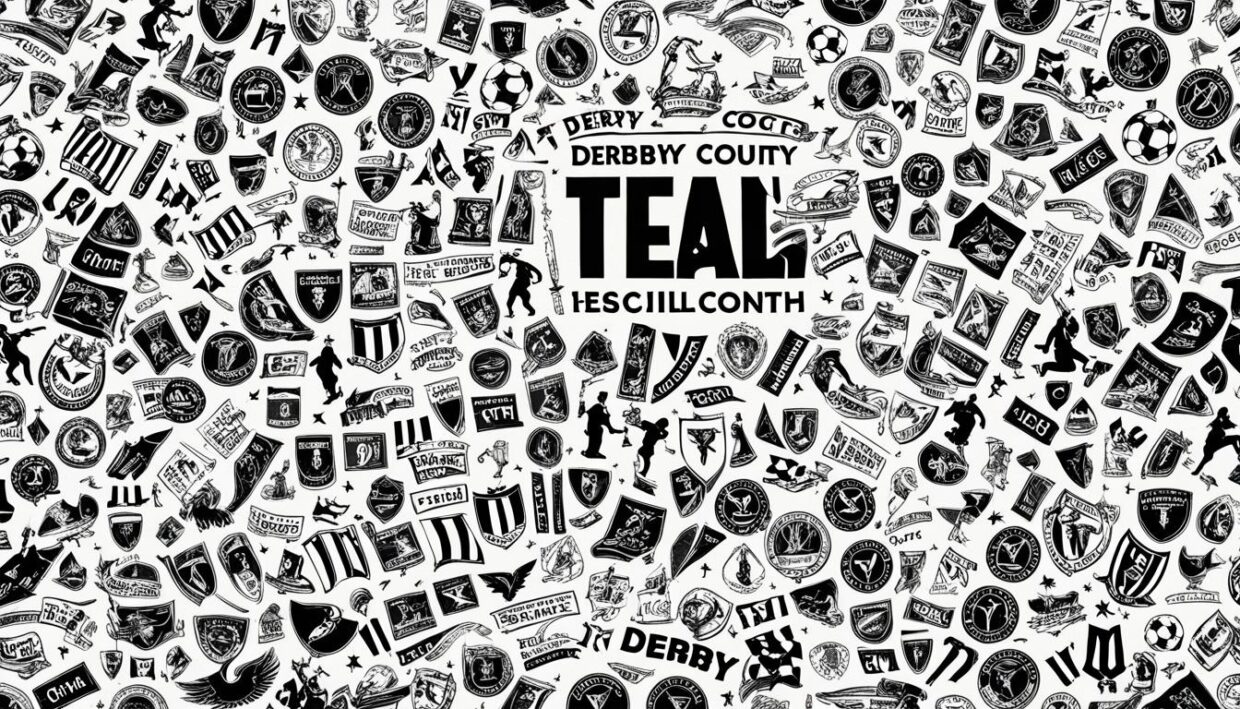
The club’s history includes an iconic 12-0 victory against Wolves in 1899, the largest winning margin in Derby’s history. Furthermore, Derby County clinched the FA Cup in the 1945-1946 season, adding another prestigious accolade to their collection. Their participation in European competitions has seen them representing England in the UEFA Cup and European Cup Winners’ Cup, among others.
Notable derby county achievements extend beyond men’s football, as the club takes pride in its women’s team competing in the FA Women’s National League. Derby County’s strong commitment to developing talent is showcased through its acclaimed academy, which has produced numerous players achieving success in professional football. The club’s fan base remains passionate and dedicated, illustrating the indelible impact Derby County has made in the realm of English football.
Current Status in the Championship League
As of the 2023-24 season, Derby County proudly competes in the EFL Championship, demonstrating a significant turnaround following their promotion from League One. The Rams returned to the championship league after finishing second in League One during the 2021-22 season, amassing an impressive 92 points over 46 games. This remarkable achievement reflected the team’s growth and determination under the guidance of Head Coach Paul Warne.
The current status derby county showcases an experienced squad, recognized as the oldest in League One, which played a crucial role in their success. Key players like James Collins contributed significantly, finishing as the top scorer with 19 goals. The players’ experience, combined with a shift from a flamboyant style to a more methodical approach, allowed the team to grind out essential results necessary for promotion.

Despite finishing seventh the previous season, which was just short of the playoffs, Derby County made notable improvements this year, cutting down on defeats and stabilizing their performance. Their strong fan support, with nearly 31,000 supporters present during crucial matches at Pride Park, provided the team with the morale boost needed to clinch their place back in the championship league.
With the ownership of David Clowes ensuring the club’s future post-financial instability, Derby County aims to solidify its presence in the championship league. Following their automatic promotion, the focus lies on maintaining positioning and aspiring for greater accomplishments in the forthcoming seasons.
Pride Park Stadium: Home of the Rams
Pride Park Stadium, opened in 1997, serves as the Derby County home ground and stands as a symbol of the club’s ambitions over the years. With a seating capacity of 32,956, it ranks as the 16th largest football ground in England. The modern venue has played host to numerous memorable matches and events, fostering a strong connection between the fans and the Rams.
The stadium’s design reflects contemporary architectural trends, making it a visually appealing landmark in the region. The field measures 105 meters x 68 meters (344 ft x 223 ft), well-suited for high-level competition. Notably, Pride Park Stadium witnessed a record attendance of 33,597 during an England versus Mexico match on May 25, 2001, highlighting its capacity to draw crowds.
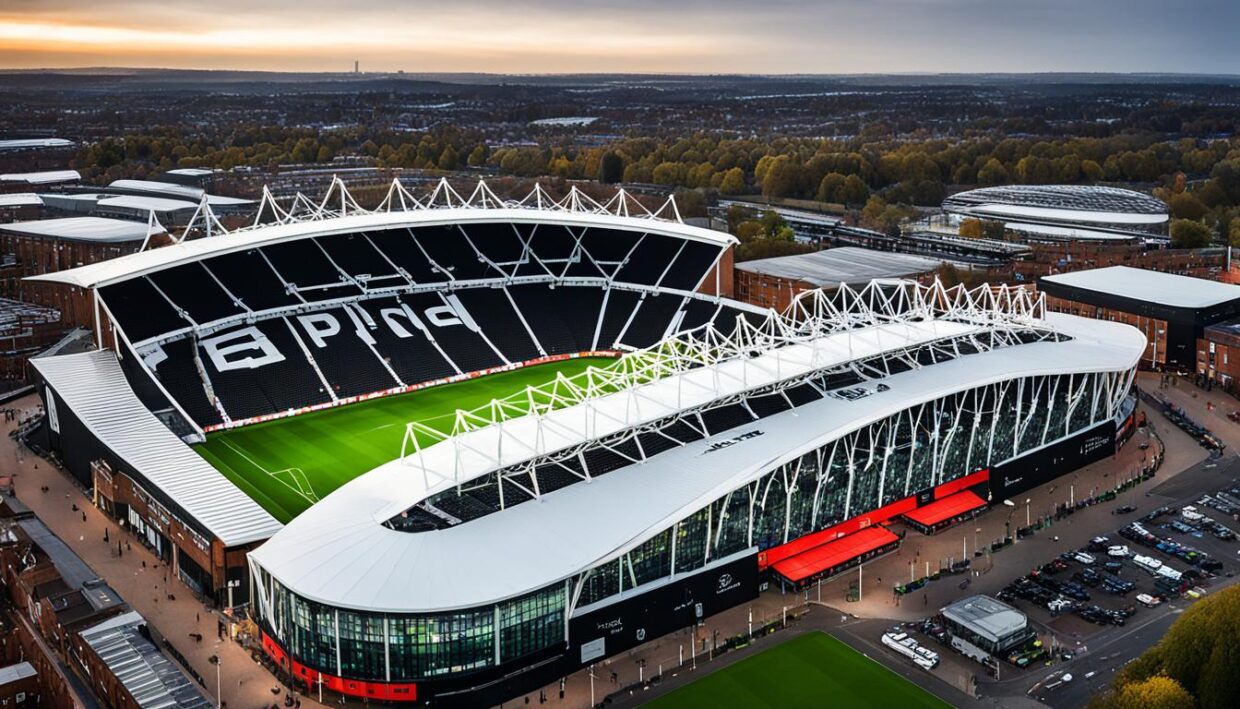
Financial challenges arose following Derby County’s relegation from the top flight in 2002, leading to ownership changes. Pride Park Stadium was eventually sold to a Panama-based corporate entity, resulting in the club paying an annual rent of £1 million to continue playing at their cherished home ground. Despite these obstacles, strong support during matches continues to define the Rams’ connection to Pride Park.
Attendance Insights
| Season | Average Attendance |
|---|---|
| 2022-2023 | 27,259 (League One) |
| 2021-2022 | 22,041 (Championship) |
| 2019-2020 | 26,727 (Championship) |
| 2018-2019 | 26,850 (Championship) |
| 2017-2018 | 27,175 (Championship) |
Ticket Pricing for 2023/24 Season
- Adults: £24-32
- Seniors: £18-24
- 18-21: £18-24
- 13-17: £12-16
- 6-12: £6-8
- 2-5: Free
Fans can also enjoy tours of Pride Park Stadium, priced at £10 per person, allowing them to explore the rich history and modern features of the club’s home ground.
Derby County’s Notable Players Throughout History
Throughout its rich history, Derby County has boasted an impressive lineup of notable players who have made significant contributions to the club. These football legends have not only excelled on the pitch but have also become a part of Derby County’s identity.
One of the most celebrated figures is Steve Bloomer, the club’s record goalscorer with an astonishing 332 goals in 525 appearances. His remarkable scoring ability has secured him a revered place in the hearts of Rams supporters.
Kevin Hector holds the record for most appearances, featuring 589 times and netting 201 goals. His durability and commitment have made him a lasting symbol of success for the club.
| Player | Appearances | Goals |
|---|---|---|
| Steve Bloomer | 525 | 332 |
| Kevin Hector | 589 | 201 |
| Roy McFarland | 530 | 48 |
| Archie Goodall | 423 | 52 |
| Sam Crooks | 445 | 111 |
| Colin Boulton | 344 | 0 |
| John O’Hare | 308 | 81 |
| Alan Hinton | 316 | 83 |
| John McGovern | 237 | 20 |
| Bobby Davison | 249 | 106 |
The resilience of players like Colin Todd, with 371 appearances, and Mick Hopkinson, who made 131 appearances, further exemplify the depth of talent at Derby County throughout the years. These notable players have paved the way for future generations and shaped the club’s storied legacy.
As Derby County continues to build its future, the contributions of these football legends remain an integral part of the team’s history.

The Impact of Frank Lampard on Derby County
Frank Lampard’s appointment as manager on May 31, 2018, marked a significant shift in Derby County’s dynamics. His arrival instilled a new sense of optimism and ambition within the team. Early on, Derby County demonstrated potential, winning four of their first six matches in the 2018-2019 season. Under his tactical guidance, the club showcased an impressive adaptability to different formations, primarily utilizing a 4-3-3 setup.
One of the highlights of Lampard’s coaching impact was the dramatic victory over Manchester United in the Carabao Cup. The match ended in an exhilarating penalty shootout, with Derby triumphing 8-7. This victory not only boosted team morale but also showcased Lampard’s strategic prowess. Despite facing challenges, including heavy defeats against Leeds and Aston Villa, the team’s resilience was evident. They secured a sixth-place finish in the Championship, earning a spot in the play-offs.
Significantly, Lampard’s focus on youth development proved vital. He brought in loan signings like Mason Mount, Harry Wilson, and Fikayo Tomori, who collectively contributed to over 30% of Derby’s non-penalty expected goals and assists. Striker partnerships with Jack Marriott and Martyn Waghorn became crucial, as they combined for a staggering total of 19 goals, significantly exceeding their expected goals metrics.
Despite the disappointment of losing to Aston Villa in the play-off final, Lampard’s legacy at Derby County lies in his ability to rejuvenate the squad. He leveraged a mix of experienced players while transitioning to youth, forming a competitive core that would continue under future management.

This transformational phase under Frank Lampard not only heightened Derby County’s competitive edge but also laid the groundwork for a prosperous future as the coaching impact reverberated through the club’s strategic approach to player development and match tactics.
Wayne Rooney: A New Era for Derby County
Wayne Rooney’s arrival at Derby County in 2020 marked a significant turning point for the club. Embracing the role of player-manager, he took on the challenge during a difficult period filled with financial turmoil and administrative challenges. Making an immediate impact, Rooney’s leadership became pivotal in fostering a competitive spirit among the squad.
Over the course of 85 matches, Rooney managed to secure 24 victories, translating to a win percentage of 28.2%. Despite this achievement, the season was marred by severe penalties. Derby faced a staggering 21-point deduction, a consequence of their administration, which ultimately left the team struggling at the lower end of the Championship table.
Without these deductions, Derby would have concluded the season in 18th place, neck-and-neck with Bristol City, having accumulated 55 points. Unfortunately, as the situation unfolded, Derby found itself seven points adrift from safety in the relegation zone.
Another challenging season saw Derby County finish with only three wins out of 23 away games and just one victory in their final 15 league matches. The team’s struggles culminated in a disappointing 7-0 loss to Philadelphia Union. In his brief tenure, Rooney implemented a team philosophy aimed at fostering resilience and teamwork, despite the overshadowing pressures from points deductions.
Rooney’s journey at Derby came to an end after relegation to League One, yet his time served as a foundation for what many hoped would become a resurgence for the Rams. As he transitioned to D.C. United, the vision of a new era football at Derby County lingered, with fans reflecting on his unique blend of talent and managerial ambition.

Coaching Legends: Brian Clough and Dave Mackay
The partnership between Brian Clough and Dave Mackay stands as a pinnacle in the narrative of Derby County’s rich history. As coaching legends, Clough’s tactical acumen and Mackay’s experience created a formidable alliance that transformed the club.
Brian Clough, renowned for his exceptional management style, began his tenure at Derby County in 1967. His vision led the team to significant milestones, including a championship title. Clough’s dynamic leadership profoundly shaped the club’s identity during the late 1960s and early 1970s.
Meanwhile, Dave Mackay, who joined Derby County after an illustrious career at Tottenham Hotspur, became a pivotal player and later influenced the team as a coach. His winning mentality and resilience on the field resonated with fans and players alike. Mackay’s debut in August 1968 drew over 21,000 fans, setting a strong precedent for his time at the club.
Under Clough and Mackay’s guidance, Derby County achieved remarkable success, including their First Division title and participation in European competitions. Their collaboration not only led to tangible victories but also inspired a generation of players and supporters.
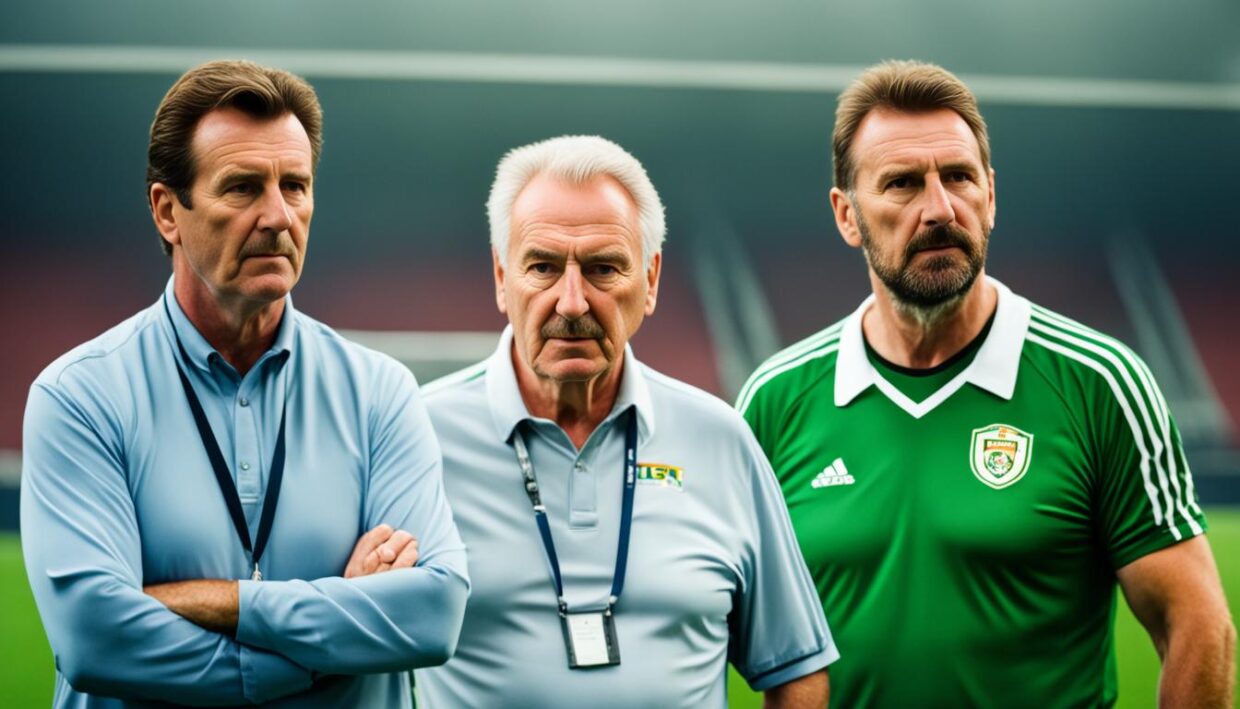
This rich legacy is celebrated by fans who recognize the impact of these coaching legends. Brian Clough and Dave Mackay left indelible marks on Derby County, shaping its path and laying a foundation for future successes. Their careers continue to be a source of inspiration, reminding us of the essence of teamwork and leadership in sports.
Steve Bloomer: An Icon of Derby County
Steve Bloomer remains one of the most celebrated figures in Derby County’s storied history. His career spanned from 1892 to 1914, during which he emerged as a renowned Derby County icon and achieved remarkable feats that reshaped the landscape of football history.
With an impressive tally of 317 goals in 536 First Division appearances, Bloomer holds the record as Derby County’s all-time leading scorer. His sharp shooting skills positioned him as the second highest all-time goalscorer in top-flight football, only behind Jimmy Greaves. Bloomer’s accolades extend to his national team, where he netted 28 goals in 23 appearances for England, marking him as a significant contributor to the national side.
Throughout his tenure, Bloomer was a dominant force in the league, clinching the title of top goalscorer five times in 1896, 1897, 1899, 1901, and 1904 alongside John Campbell of Aston Villa. He remarkably led Derby County in scoring for 14 consecutive seasons and recorded 17 hat-tricks in league play. Notably, in January 1899, he scored six goals in a single match against Sheffield Wednesday, further cementing his legendary status.
Bloomer played a pivotal role in Derby County’s successes, notably helping the team secure the Second Division title in the 1911–12 season and achieving a second-place finish in the First Division in 1895–96. After a brief spell with Middlesbrough in 1906, he returned to Derby and continued to contribute significantly to the club’s triumphs.
Even during tumultuous times, such as his internment at Ruhleben prison camp during World War I, Bloomer found ways to preserve normalcy. He helped organize football matches that provided joy and a sense of community among the prisoners. This spirit of resilience showcased his deep love for the game and fellow players.

In summary, Steve Bloomer’s legacy as a Derby County icon is undeniable. His extraordinary goal-scoring achievements and contributions to both club and country have left a lasting impact on football history. Bloomer passed away in Derby in April 1938, but his memory continues to inspire future generations of players and fans alike.
| Achievement | Stat |
|---|---|
| Goals Scored for Derby County | 317 |
| First Division Appearances | 536 |
| Goals for England | 28 |
| Seasons as Top Goalscorer | 5 |
| Hat-tricks Scored | 17 |
| Goals in One Match (vs Sheffield Wednesday) | 6 |
Rivalries: The East Midlands Derby
The east midlands derby features one of the fiercest football rivalries in England, primarily between Derby County and Nottingham Forest. A total of 109 meetings have taken place, with Nottingham Forest leading the series with 43 wins compared to Derby County’s 38 victories. The rivalry is marked not only by the number of matches but also by the passionate support from fans and the intense atmosphere during games.

Throughout history, both clubs have experienced dramatic highs and lows. Since the appointment of Brian Clough as Nottingham Forest manager in the late 1970s, the rivalry escalated significantly. Clough, who once played for Derby County, became a legendary figure at both clubs.
- Largest victory: Derby County 5–0 Nottingham Forest (April 11, 1898 and March 22, 2014)
- Longest winning streak: Nottingham Forest with 5 consecutive wins
- Longest unbeaten streak: Nottingham Forest with 10 matches unbeaten
- All-time record: Derby County – 38 wins, Drawn – 30, Nottingham Forest – 43 wins
The rivalry’s significance is underscored by its ranking as the sixth fiercest rivalry in English football, according to an unofficial survey. Events on the pitch have often been controversial, such as the two disallowed goals for Derby in a match officiated by Stuart Attwell in 2008, showcasing the intense emotions involved in every encounter.
| Statistic | Derby County | Nottingham Forest |
|---|---|---|
| Total Meetings | 109 | 109 |
| Wins | 38 | 43 |
| Draws | 30 | 30 |
| Largest Win | 5–0 | 5–0 |
| Longest Winning Streak | 4 | 5 |
| Longest Unbeaten Streak | 6 | 10 |
In the modern landscape of football, the east midlands derby continues to capture the attention of supporters and media alike. The rivalry remains a critical element of both clubs’ identities, reflecting deep-rooted pride and competitive spirit that defines English football.
Fan Culture and Support for the Rams
The derby county fan culture is rich and deeply rooted, reflecting the unwavering dedication of the Rams supporters. At matches held at Pride Park Stadium, the atmosphere is electric, with fans showcasing their loyalty and passion through chants, banners, and a sea of black and white. This vibrant energy creates an unforgettable experience for both players and spectators, uniting individuals from various backgrounds to proudly cheer for their beloved club.
Community engagement plays a vital role in strengthening these connections. Groups like the Punjabi Rams, founded in 2014, have fostered a welcoming environment for South Asian fans, with a membership of 350. Their presence not only diversifies the fan base but also highlights the importance of inclusivity in the club’s culture. Additionally, recent proposals for a Derby County Supporters Board aim to engage fans in vital decision-making processes, ensuring that the voices of Rams supporters are heard regarding the club’s future.
Emotional investment can be seen across generations, as stories of family ties and long-standing traditions reveal the profound impact Derby County has on its followers. Fans like Ron Webster, who has supported the club for over 80 years, and Ben Knowles, who hopes to pass his passion to his two sons, illustrate how deeply intertwined the Rams’ identity is with the local community. This connectivity not only brings joy but also highlights the pressing concerns shared by supporters about the club’s potential financial difficulties, proving that the derby county fan culture is as much about heritage and hope as it is about football.





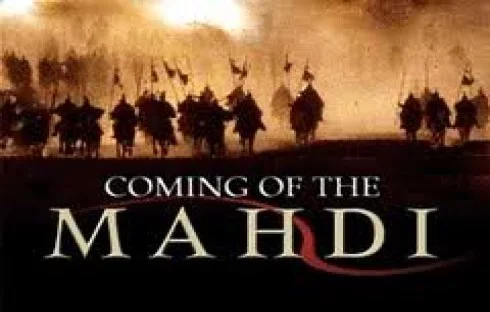

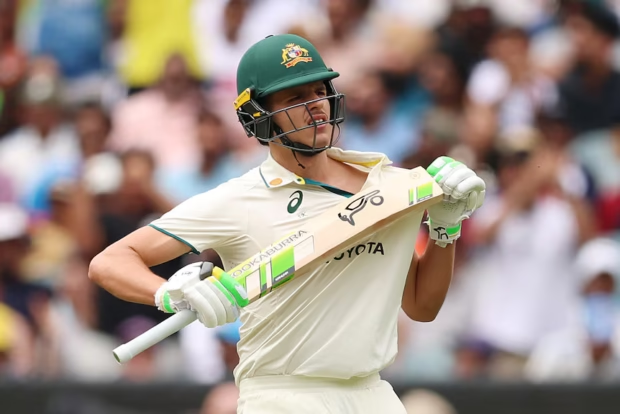











Be the first to leave a comment